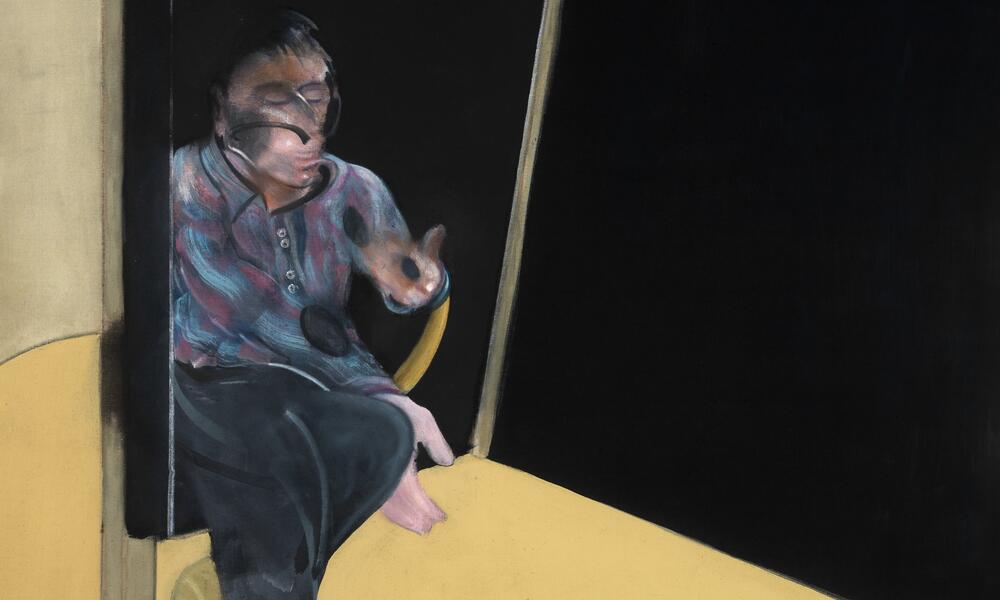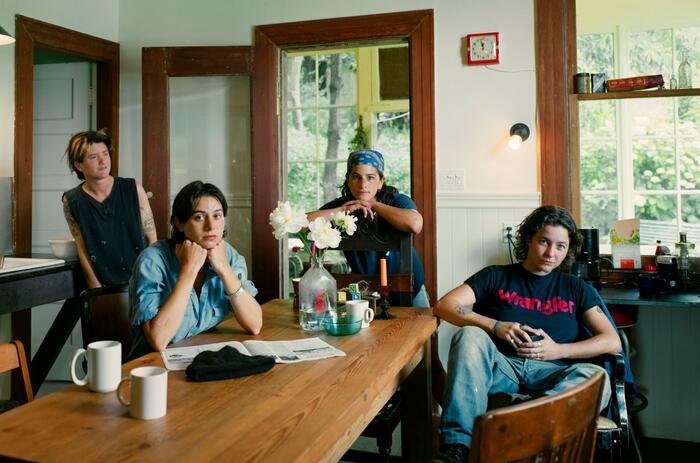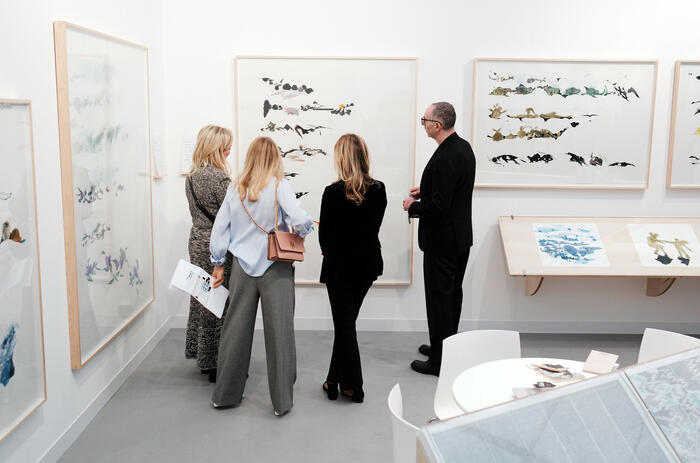BODY INSIDE OUT - FRANCIS BACON, THE BEAUTY OF MEAT
A man is waiting. In elegant clothes, the figure is placed in the center of what looks like a hotel bar. He plays the lead role on a sort of stage, an interior that is something of a cage, something of a scenic locus, as if a possible flirtation or a desired encounter would provide some catalysis of emergence, a quick enjoyment, an intense release, however short and finite, perhaps dismantling a routine of limits. Man in Blue (1954) works as a synthesis of the not so extensive but very significant gathering of the celebrated Francis Bacon (1909-1992) in A Beleza da Carne (The Beauty of Meat), at Masp (São Paulo Museum of Art). The exhibition is curated by Adriano Pedrosa, artistic director of the institution and curator of the current edition of the Venice Biennale, the 60th, on show until November in the Italian city, and co-curated by Laura Cosendey.

The importance of the selection is clearly related to the queer reading of the Anglo-Irish titan's production, but not exclusively. The collection of around 20 paintings, as well as photographs, is relevant for once again bringing to Brazil a dedicated portion of the artist's non-conformity, who has no paintings in public centers in the country and was seen with a similar focus a long time ago, in the special room of the 24th São Paulo Biennial, in 1998, curated by Paulo Herkenhoff. The critic signed one of the essays in the catalog, analyzing Bacon's rough pictorialism in the light of anthropophagy, the core concept of the historic 1990s show. “In the work of Francis Bacon, it is difficult to know where the painting begins, where the skin begins from the pictorial mud, where the man begins in that painted man,” writes Herkenhoff in the publication.
Man at a Washbasin (c. 1954) also turns out to be another key moment in A Beleza da Carne. The loneliness in the act of cleaning, of purging something that is always in question, in an everyday scenography that emphasizes the character of inner anguish in these scenic boxes repeated in series in the artist's body of work. These expedients gain intensity through rapid brushstrokes, the inverse surface of the treated chassis and the graphic contrast of colors. Study of a Nude (1952-53) is also a relevant painting in the current section, in which the scenic box once again features the model body of a man in the style of Eadweard Muybridge (1830-1904), a pioneer of photography that dissects movement.
The use of photography gave Bacon's pictorialism a striking signature. The selection of the image triggered a complex imagistic process of building a work, which could be an intricate transmutation, since the artist had somewhat chaotically arranged references of photographic papers and pages of various orders that could be stepped on, crumpled, torn, etc. by anyone passing through the studio.
Bacon also used his own portrait subjects, such as his friend Lucian Freud (1922-2011). The face of Kafka (1883-1924) was also another source for his friend's portrait. So the images available were almost a clue, which, after a particular process of creation, would result in something other than plasticity. For this reason, Portrait of Lucian Freud (1951), oil and sand on canvas, gains importance in A Beleza da Carne, with the figure of the painter friend somewhat withdrawn, with a less fragmented face than in canvases of this type, an enigmatic shadow advancing into the extra-field of the composition and yet surrounded by the usual scenic box - and not so much to do with the figure of the literary man.
The gathering of works in this 2024 of the artist's powerful oeuvre, now a treasure trove, may also bring new questions about the state of things and the inseparable anxieties of what is human. Bacon lived through two world wars, the turbulent interwar period, a childhood and youth full of setbacks, and because he was gay, he suffered prejudice, even legal prejudice at national level (the UK had laws against homosexuality until the 1960s), among other difficult situations.
Therefore, in the Masp exhibition, there is a clear poignancy and topicality in elements used repeatedly by the painter, such as the figure of Pope Innocent X in a frenetic deconstruction and the representation of mouths in more than distressing screams, in storms that don't seem to cease. That's why paintings like Head I (1947-48) and Study of a Head (1952) are fundamental in this section. The inharmonious tone and aggressive palette continue to attest to the horror of humanity, whose dark figures never seem to cool down, even in these days of hyper-connectivity and ubiquitous technology punctuated by 'advances'.
Francis Bacon - The Beauty of Meat
Masp - Av. Paulista, 1578, São Paulo










